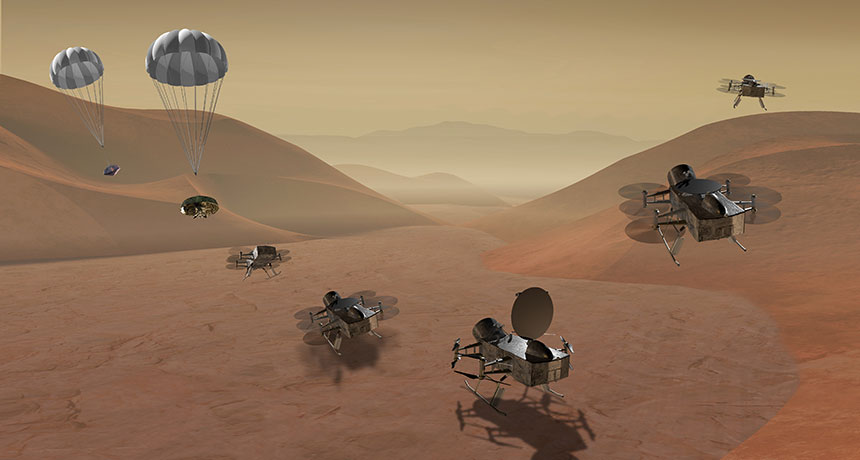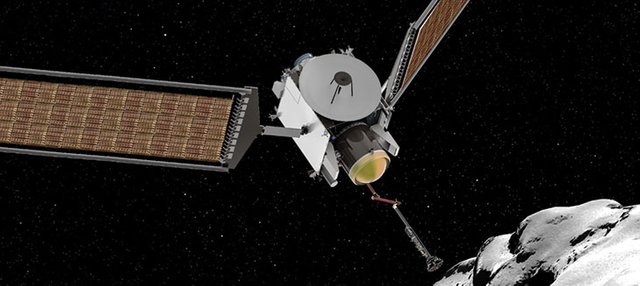
NASA’s next mission will go where some spacecraft have gone before. The two finalists in the agency’s selection process will return to either Saturn’s moon Titan or comet 67P/Churyumov-Gerasimenko, NASA announced in a press teleconference on December 20.
The Dragonfly mission would launch a drone-like craft to Saturn’s largest moon in 2025 that would land in 2034. NASA’s Cassini-Huygens mission showed that Titan has lakes and rivers of liquid ethane and methane, and may have chemistry that is conducive to life.
“We can test how far prebiotic chemistry has progressed in an environment that we know has the ingredients for life,” said lead investigator Elizabeth Turtle of the Johns Hopkins Applied Physics Laboratory in Laurel, Md.
The other finalist, the Comet Astrobiology Exploration Sample Return (CAESAR) mission, would launch a spacecraft before the end of 2025 to collect a 100-gram sample from the surface of comet 67P, which was mapped by ESA’s Rosetta spacecraft, and return it to Earth in 2038.
Rosetta’s mapping work “dramatically improves the chances of success for a very difficult activity, which is grabbing a piece of a comet,” said lead investigator Steven Squyres of Cornell University.
Each project will receive funding to further develop the mission concepts. In July 2019, NASA will announce which mission will fly.
Two other missions, one to search for signs of life in the plumes of Saturn’s moon Enceladus and one to land on Venus, will receive funding to tackle specific technology questions to prepare the missions for future competitions.
Hi! I am a robot. I just upvoted you! I found similar content that readers might be interested in:
https://www.sciencenews.org/blog/science-ticker/nasa-next-stop-will-be-titan-or-comet
Downvoting a post can decrease pending rewards and make it less visible. Common reasons:
Submit